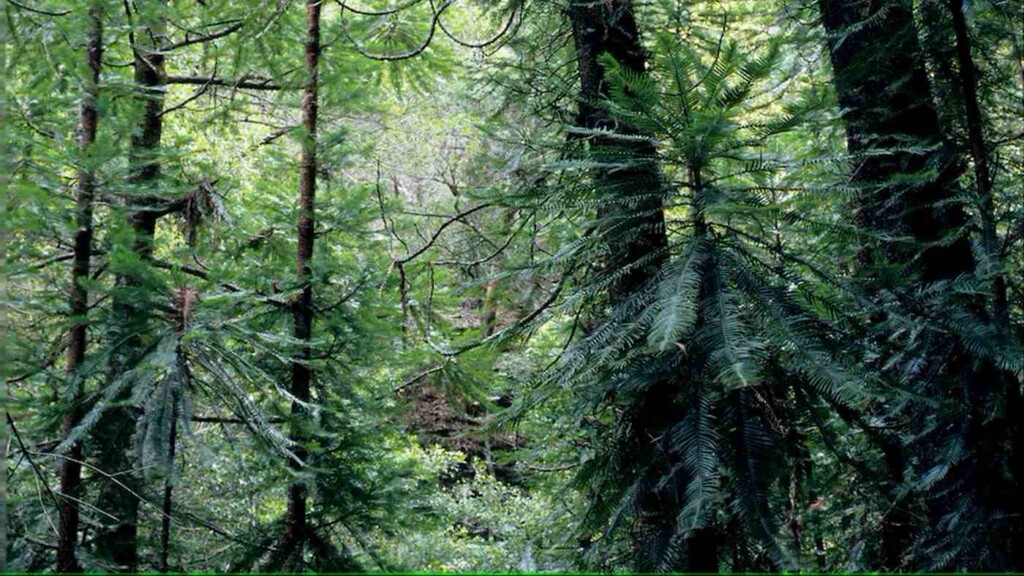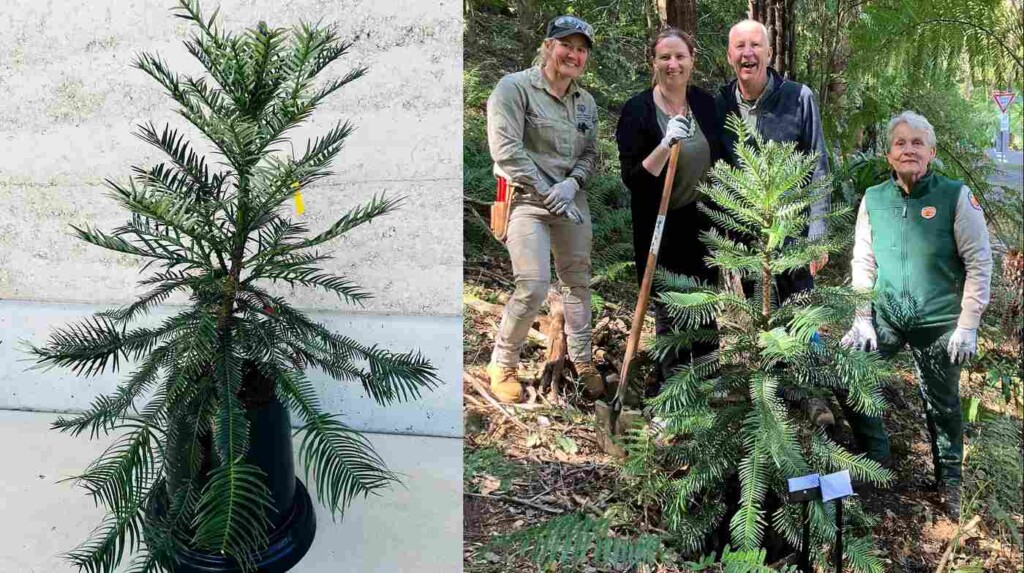 Supplied to ABC AU by the Botanic Gardens of Sydney
Supplied to ABC AU by the Botanic Gardens of Sydney30 years ago this month, botanists in Australia made the “find of the century” when they discovered a stand of pine trees in the mountains near Sydney that have survived from the time of the dinosaurs.
Now, to mark the occasion, the Botanic Gardens of Sydney are auctioning off 6 saplings to avid horticulturalists in order to spread enthusiasm, interest, and connifer genetics, around Australia.
There’s little precedent to generate an estimate as to how much the pine saplings will sell for, but there may have never been a higher-profile plant auction in world history, to say nothing of Australia’s.
The 90 or so original trees surviving in the wild are located in an area so secretive, that entry even by scientists is barred for all but the most important requirements. Unauthorized entry into the sites is punishable by up to 2 years in prison and a fine of $330,000 according to the Australian Biodiversity Conservation Act, with ignorance of the law and the sites’ locations being no excuse.
Introduction of invasive plants, parasites, microbes, fungal spores, or plant viruses could wipe out this relic population in a matter of weeks, so any visitors must be thoroughly sanitized, and their activities carefully controlled.
The Wollemi pine evolved 91 million years ago and went extinct according to the fossil record 2 million years ago, but in the Blue Mountains west of Sydney, a stand of 90 specimens were found high in the more remote peaks in 1994.
It not only survived the comet impact and global firestorms that killed the dinosaurs but all the turmoil of the ending of the last ice age as well.
For the past three decades, and in extreme secrecy, a team of specialists from the National Parks and Wildlife Service (NPWS) of Australia has been gradually planting small clumps of the Wollemi pine in other locations to help ensure it has every chance to see another 91 million years.
Director of horticulture at the Botanic Gardens of Sydney, John Siemon, said the greater the difference in the trees’ genetics, the better chance they had of survival.
AUSTRALIAN CONSERVATION NEWS: Passionate Mushroom Researcher Spends Decade Unravelling Mystery of 200-year-old Museum Specimen
“Those people who are purchasing into the auction, we hope have that passion like we do, for conserving plant species,” he told ABC News Australia. “We’d be very excited to have the owners understand the importance of the plant, and be able to find homes for them that are the most suitable to live out their life to maturity and beyond.”
 (left) one of the Wollemi pine saplings to be auctioned (right) a team at the Mount Tomah introduction site poses with one of the 40 saplings – Supplied to ABC AU by the Botanic Gardens of Sydney
(left) one of the Wollemi pine saplings to be auctioned (right) a team at the Mount Tomah introduction site poses with one of the 40 saplings – Supplied to ABC AU by the Botanic Gardens of SydneyFor readers thinking that an auction is a very shallow and unwise use of these precious saplings, 40 others were recently planted at the Blue Mountains Botanic Gardens at Mount Tomah, also with the 30-year anniversary in mind.
INCREDIBLE PLANTS OF OUR WORLD: World’s Largest Genome Discovered in a Tiny Fern: ‘Breaks all records’
Blue Mountains National Park Area Manager, Lisa Menke, said the 40 saplings planted created a full genetic picture of the tree in one place.
“It’s like an insurance population, where once these trees grow up, they’ll become the seed bank for future,” she said.
MORE OUTRAGEOUS AUCTIONS: How One Man Stumbled Upon Complete Stegosaurus Skeleton Now Set to Earn Millions at Auction
Other areas around the Blue Mountains have been investigated for potential introduction sites, but this pine, with needles akin to ferns of Granny Smith Apple-green colors, has become almost exclusive to a few areas on the higher peaks, shivering on the cold edge of evolutionary oblivion, growing mere millimeters per year in secret, for millions of years.
Dozens of saplings have been shipped off to botanical gardens around the world where they can be stored as additional insurance populations while simultaneously inspiring conservation funding, but in terms of walking through Cretaceous Era forests, the average person’s chance to do so remains as slim as ever.
SHARE This Truly Unbelievable Story With Your Friends On Social Media…
Source link

